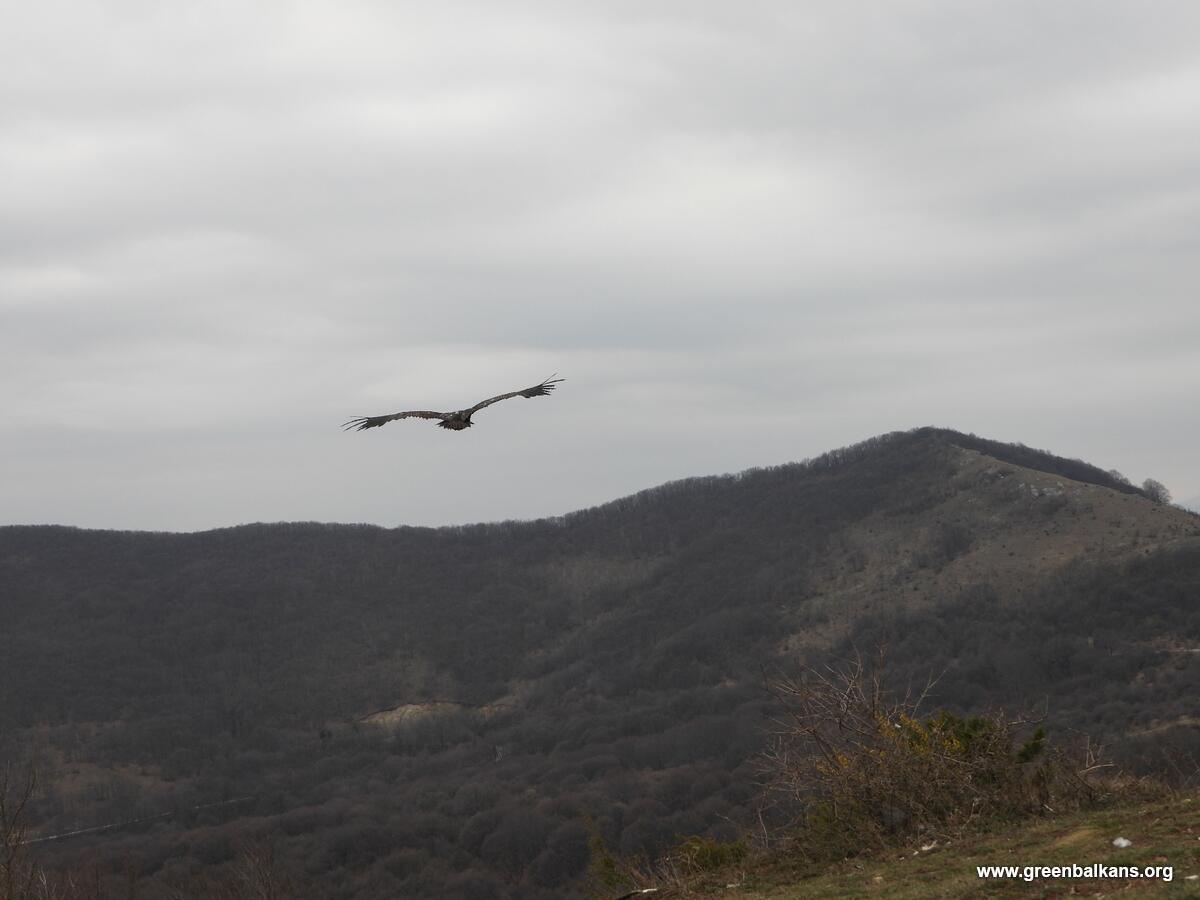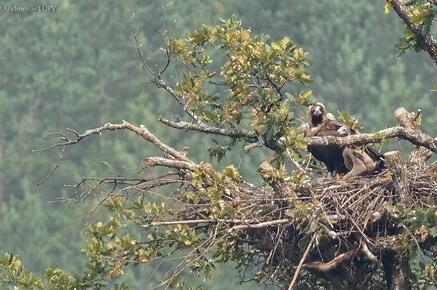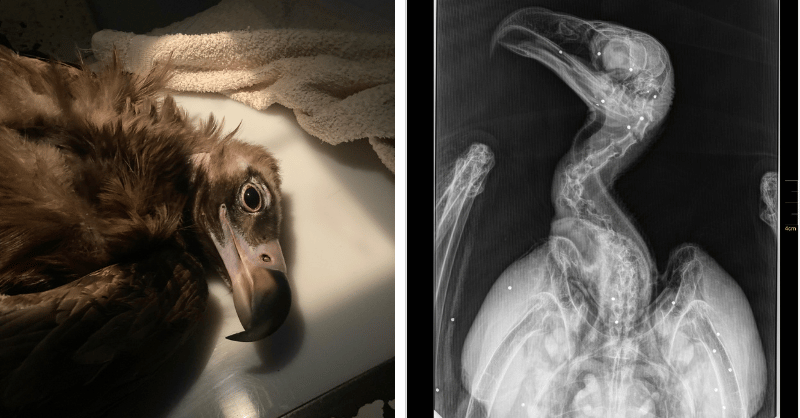On July 30, 2024, a team from Sabuko gathered in the picturesque wilderness of Georgia to tag a young Cinereous Vulture (Aegypius monachus), still at the nest, with a GPS tag provided by VCF.
The tagged chick is part of a not well studied population of Cinereous Vultures and therefore the monitoring data will be very valuable.
This initiative is part of a broader conservation effort in the Caucasus region, including Georgia and Armenia, to monitor both Cinereous Vultures (CV) and Egyptian Vultures (EV).

Tagging the chick
On the morning of 30 July, excitement filled the air as the team set out to tag the Cinereous Vulture chick. This chick, weighing 7.1 kg, had been carefully monitored already for several weeks. Previously deemed too small for tagging, it had now grown strong enough for the procedure.
The team carefully approached the nest and gently placed a lightweight back-pack harness on chick, securing the GPS/GSM device. The tag, a small marvel of technology, provides invaluable data on the chick’s movements and behavior once it fledges.
After fitting the GSP tag, blood samples were taken to determine the sex of the bird and now we are waiting for the results.

The importance of tagging
Tagging vultures is a critical tool for conservationists. By tracking their movements and behavior, researchers can gain a deeper understanding of vulture biology and ecology, identifying key threats and informing targeted conservation measures. At an individual level, tagging allows for the monitoring of a bird’s health status, enabling rapid intervention if necessary.
The data collected from GPS tags are invaluable for ensuring the timely rescue of vultures in distress. If a tagged bird shows no movement, a drop in body temperature, or inactivity detected by the accelerometer, an alert is triggered. This allows conservation teams to respond quickly, potentially saving a weak or injured vulture. Immediate action also increases the chances of determining the cause of eventual death and, if necessary, conducting a criminal investigation to address any threats.
However, the effectiveness of tagging depends on the promptness of the response. Delays in retrieving tags or investigating dead birds can undermine the purpose of tagging. Therefore, building a network of contacts, monitoring tagged birds frequently, and ensuring quick field responses are crucial components of a successful tagging program.
Cinereous Vultures in Georgia
Tagging the Cinereous Vulture in Georgia will provide valuable data on the movements and threats faced by this poorly studied population. This information is essential for developing effective conservation strategies and ensuring the survival of these endangered birds in the region.
The last estimate for this species in the country suggested there were around 50 breeding pairs, mostly in the border area between western Azerbaijan and Georgia’s southeastern border. This area contains one of the largest continuous pasturelands of which we are aware in the region, and supports the highest year-round density of extensively farmed livestock in the Caucasus. Vultures benefit from high livestock mortality typical of this kind of farming. Like their counterparts in Central Asia, cinereous vultures in the Caucasus seem to winter much further south, and abandon their breeding grounds, unlike conspecifics in Europe.

Looking ahead
The tagged Cinereous Vulture chick in Georgia is part of a batch of tags sent by VCF to both Georgia and Armenia, highlighting the regional cooperation in vulture conservation. As this young vulture prepares to leave the nest in the coming weeks, conservationists are hopeful that it will thrive and provide valuable insights through its GPS data.
Thank you to the dedicated teams and partners for their hard work and commitment to vulture conservation. We hope our newly tagged nestling will soon soar the Georgian skies safely!





